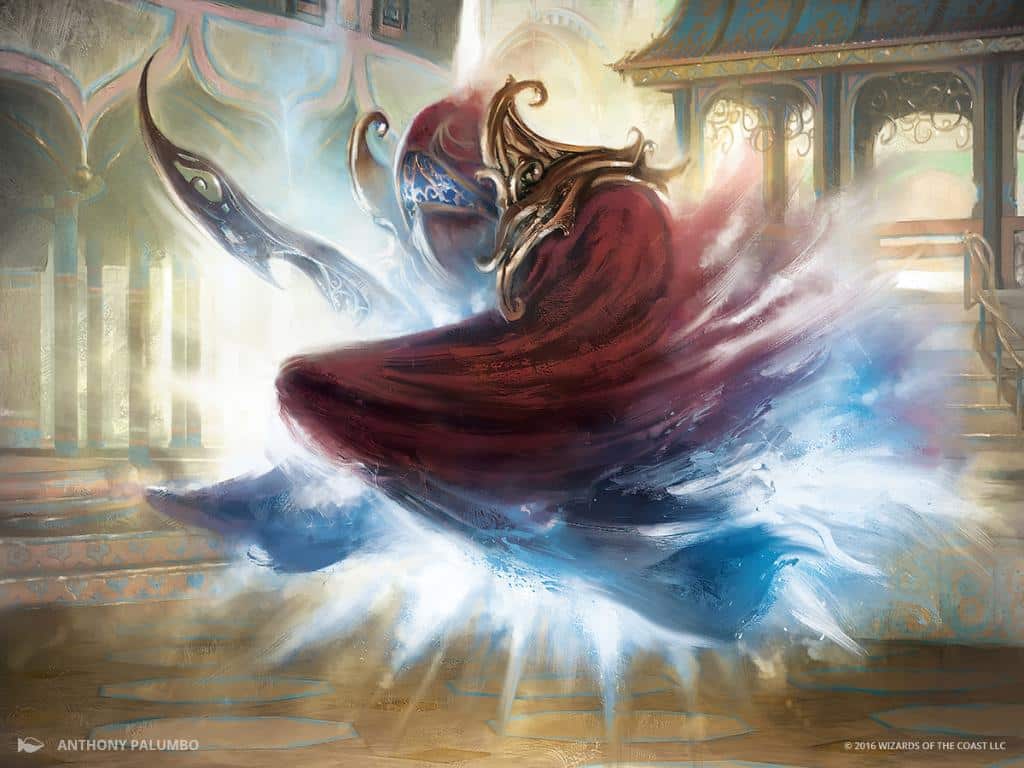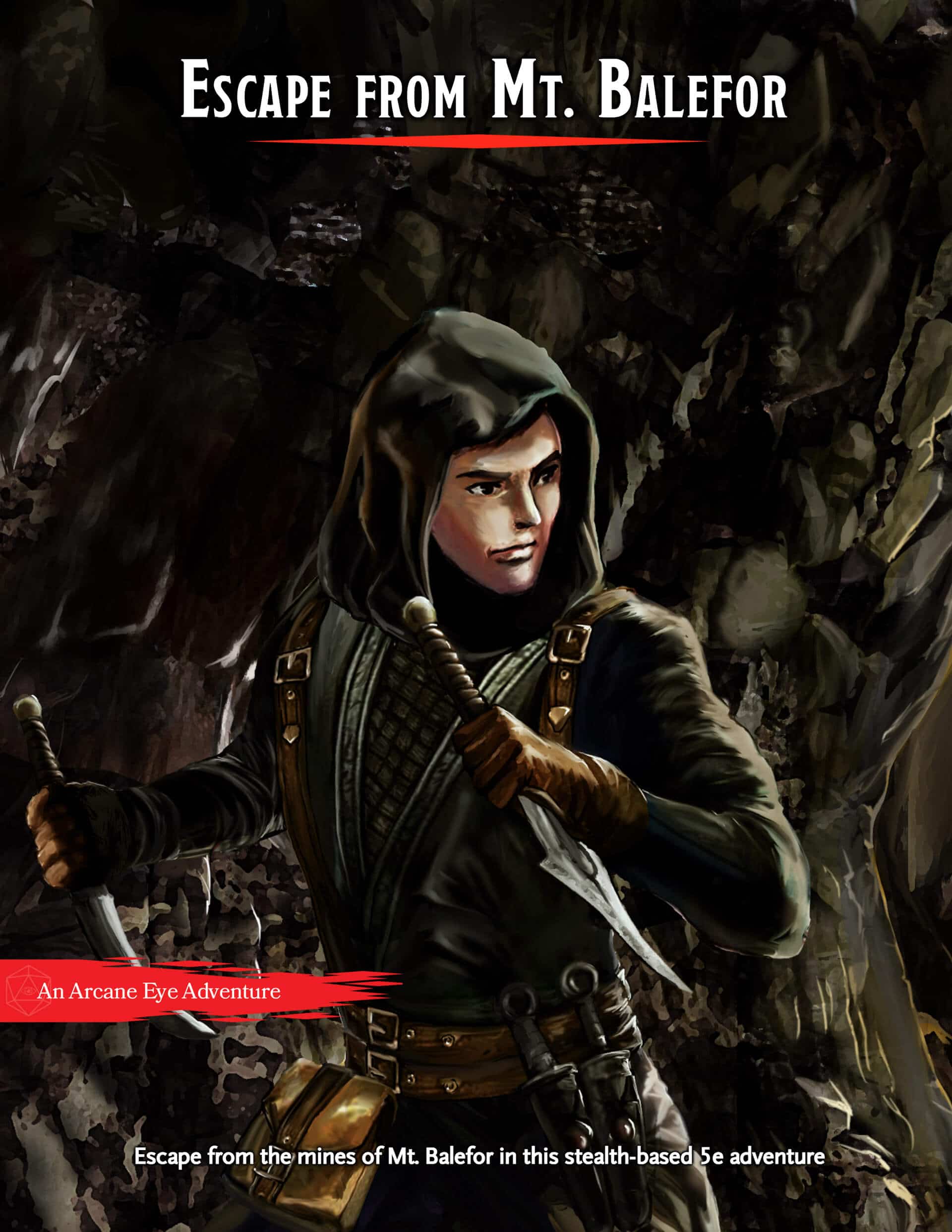Fade Away 5e
Published on August 11, 2023
The your gnomish magic to disappear into the shadows, leaving your enemies bewildered.

Anthony Palumbo - Wizards of the Coast - Disappearing Act
Arcane Eye may earn a small commission from affiliate links in this article.
Learn more.What Is Fade Away 5e?
Fade Away is a feat specific to the gnome race and is perfect for those who wish to vanish from sight when threatened. When you take damage, you can use this feat to become invisible until the start of your next turn or until you attack, make a damage roll, or force someone to make a saving throw. This not only provides a tactical advantage but also allows for strategic retreats or repositioning. It’s like having a built-in escape button!
How Does Fade Away Work?
- You get an ASI to either Dexterity or Intelligence
- When you take damage, you can use a reaction to turn invisible. The invisibility lasts until you attack, make a damage roll, force someone to make a saving throw, or until the end of your next turn. This reaction recharges every short or long rest.
Let’s break these down:
The ASI is great for builds normally opt for a gnome race, like Intelligence caster or Dexterity-based martials. The ability to turn invisible in response to damage is also beneficial to these builds who are normally squishy characters that don’t like to be caught in a tight spot.
If you’re in dire straits, invsibility is probably the best option besides maybe a teleportation spell like misty step. Seeing as enemies can’t see you and the invisibility lasts until the end of your next turn, you’ll be able to move freely without worrying about an opportunity attack. The invisibility also provides a offensive benefit, allowing you to take an attack with advantage once you get yourself to safety.
Is Fade Away Good?
In our 5e Feats Tier List, Fade Away was given a B Tier rating, making it a niche feat that can improve some builds in D&D 5e.
This is an extremely strong ability with a long recharge time, and is restricted to the gnome race. Being able to go invisible when you take damage allows you to escape any more damage and get advantage on your next hit. This is great for gnome rogues, though gnomes are usually more conducive to wizards and artificers.
Unfortunately, when compared to a feat like Shadow Touched, which provides the invisibility spell on top of another spell of your choice and allows you to increase any spellcasting ability, Fade Away simply doesn’t stack up. In most cases, Shadow Touched will be better, unless you’re already stacking into Intelligence or Dexterity, and plan to be in the fray where you’ll be frequently taking hits so you can make better use of your invisibility reaction.
Fade Away 5e Interactions
Keep in mind that turning invisible in response to damage doesn’t make you immune to any more damage heading your way. Creatures can still attack you (albeit, with disadvantage) and you can still be hit by AoE effects.
Which 5e Classes Make the Most of Fade Away?
The color code below has been implemented to help you identify, at a glance, how good the Fade Away 5e feat is for a specific class/subclass.
- Red isn’t going to contribute to the effectiveness of your character build at all
- Orange Situationally good, but a below-average option otherwise
- Green is a good option
- Blue is a great option, you should strongly consider this option for your character
- Sky Blue is an amazing option. If you do not take this option your character would not be optimized
Because this feat is limited to the gnome race, it’s practicality is somewhat lessened unless you’re playing with Tasha’s Cauldron of Everything‘s Customize Your Origin rules. Even if you are able to choose the racial ASIs for your gnome character, this feature only boosts Dexterity and Intelligence, reducing the likelihood a Strength-based martial or non-Intelligence caster will pick it up.
Artificer: Gnomes make great artificers but this feat is simply outclassed by the Shadow Touched feat. The only way Fade Away comes out ahead is if you're planning on a more martial-minded artificer, like an Armorer or Battle Smith, and want some additional defensive capabilities.
Barbarian: Not only is the gnome race not good for barbarians, the ASIs from this feat don't match your priorities. Plus, barbarians usually want to be visible so they can soak damage.
Bard: The ASIs aren't great, but you could still potentially boost your Stealth and AC through increasing Dexterity. In most cases, bards are out of combat enough that they'd rather take Shadow Touched and get access to the invisibility spell, rather than Fade Away's reaction.
Cleric: The ASIs don't match a cleric's priorities, especially heavy armor clerics . If your cleric plans on staying out of combat, just take the Shadow Touched feat and get access to the invisibility spell, rather than Fade Away's reaction.
Druid: The ASIs aren't great, but you could still potentially boost your Stealth and AC through increasing Dexterity. In most cases, druids are out of combat enough that they'd rather take Shadow Touched and get access to the invisibility spell, rather than Fade Away's reaction.
Fighter: This could be beneficial if you've built a Dexterity-based fighter or an Eldritch Knight. Keep in mind that you'll only get advantage on one attack after you've turned invisible.
Monk: Being able to turn invisible as a reaction isn't a bad tool for monks, who notoriously struggle with survivability. This also allows you to use your increased speed to great effect as no one will be able to take opportunity attacks on you.
Paladin: Not only is the gnome race not good for paladins, the ASIs from this feat don't match your priorities. The invisibility can be helpful for getting advantage for Great Weapon Master or Divine Smites, but this feat is still not worth the resources.
Ranger: A pretty solid ability for Dexterity-based rangers, especially if they're using ranged weapons. Being able to disappear after you take a hit will allow you to put some ground between you and your enemy so you don't have disadvantage on your attacks.
Rogue: A pretty solid ability for rogues, especially if they're using ranged weapons. Being able to disappear after you take a hit will allow you to put some ground between you and your enemy so you don't have disadvantage on your attacks. Plus, rogues are pretty squishy, so being able to turn invisible after you take damage, then on your turn use your movement, Cunning Action to Dash, and action to Dash, can help you get out of combat if you're looking rough
Sorcerer: The ASIs aren't great, but you could still potentially boost your Stealth and AC through increasing Dexterity. In most cases, sorcerers are out of combat enough that they'd rather take Shadow Touched and get access to the invisibility spell, rather than Fade Away's reaction.
Warlock: The ASIs aren't great, but you could still potentially boost your Stealth and AC through increasing Dexterity. In most cases, warlocks are out of combat enough that they'd rather take Shadow Touched and get access to the invisibility spell, rather than Fade Away's reaction.
Wizard: The ASIs are nice, as you can boost your spellcasting ability. However, wizards are out of combat enough that they'd rather take Shadow Touched and get access to the invisibility spell, rather than Fade Away's reaction.
Fill out the form below to receive Escape From Mt. Balefor for free!
Or follow us on Instagram, Twitter, and YouTube.

